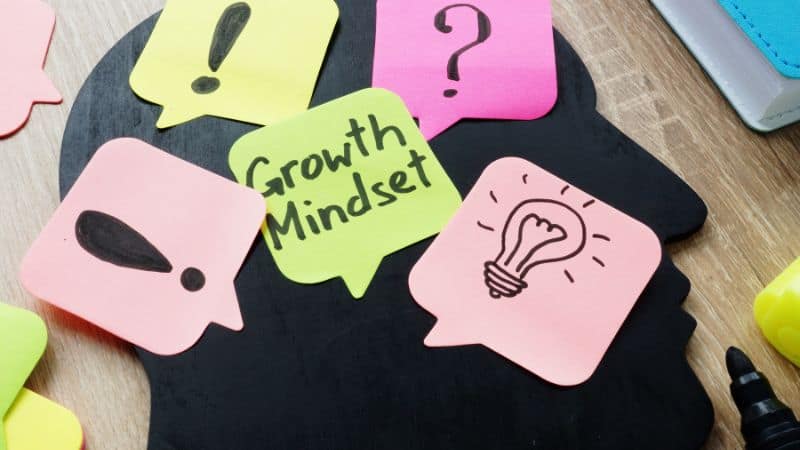Make your team embrace a growth mindset. Teams that embrace a growth mindset are more likely to innovate, problem-solve, and achieve their goals.
Some Filipinos consider their fixed mindset as part of their culture and way of life. Therefore, they will resist giving up what they believe to be true.
Team leaders must sell a growth mindset to help everyone win.
But how can teams cultivate a growth mindset culture?
I will explore strategies for fostering a learning culture in your team, share success stories, and provide practical tips you can apply in your workplace.
🎯 Your team is already good—now it’s time to make them great. Our team-building workshops offer practical skills and authentic connections, so every member feels like they belong. Let’s build something amazing.
Growth Mindset in Teams
A growth mindset is a belief that people can develop intelligence and abilities through hard work and dedication.
When applied to teams, it means that team members can improve their collective intelligence and skills with effort and practice. For this reason, we provide interventions to improve the team’s performance.
Cultivating a growth mindset culture in teams means encouraging continuous learning, risk-taking, and collaboration.
However, developing a growth mindset culture in teams can be challenging, especially if team members have deeply ingrained fixed mindsets.
A fixed mindset assumes that abilities are innate and predetermined. Therefore, it’s essential to recognize and address any fixed mindset attitudes within the team.
5 Ways to Cultivate a Growth Mindset in Teams
Here are some practical strategies that can help cultivate a growth mindset culture in teams:
Encourage risk-taking and experimentation.
There was a time when team members could only follow instructions, nothing more. They cannot take risks. They cannot think out of the box.
Why fix it when it is not broken?
When I was young, my father did not want me to touch our transistor radio, for I might do something to stop it from working.
Some teachers asked me to recall my appointments when I was teaching, for my teaching style was not like theirs. For example, one subject coordinator asked the principal to make me stop asking my students to write journals. Why? Because she’s going to ask her students too.
I’ve been asked this question many times. And those who joined my leadership training programs say the same thing about some of their bosses.
I understand the importance of keeping what works. I encourage team leaders to create systems that repeat the best practices.
What is not broken can still be improved.
Consider these steps and pick the ones applicable to you.
Allow team members to take ownership of projects. Assign a task to a team member and encourage them to try new approaches and ideas.
Create a safe space for experimentation. Create a safe space for experimentation by providing opportunities for team members to try new things in a controlled environment.
For example, you may create a pilot program to test a new idea or process before implementing it on a larger scale.
Encourage team members to share their failures. You may hold regular meetings where team members can share their successes and failures and discuss what they learned from them.
Provide resources for learning and development: Training and development programs can encourage team members to experiment with new ideas and approaches.
Provide access to online courses or industry conferences to help team members learn about new technologies or approaches.

Emphasize the value of effort and persistence.
It is tempting to consider only the results, not the effort of team members. Yet, we know we must rely on more than one intelligent individual for the team’s consistent results.
Everyone must improve. And research says that the best way to do it is to consider the effort of individuals. The collective intelligence of a team is a product of deliberate training.
Here are a few ways you can do as a team leader to emphasize the value of effort in team persistence.
Recognize and reward hard work and dedication: Do this regardless of the outcome. Most organizations pay their praise to the top 1 among 100 employees. Unfortunately, that often discourages those who worked harder but won’t get the award.
I remember a client company that gives the #1 award to only one person for seven years. Others did not exert more effort. They did not recognize even if you improved your performance twice over. If you are not number 1, you are one of the losers.
You may publicly recognize team members who put in extra effort or go above and beyond to achieve team goals.
Emphasize the importance of effort in achieving success. You may share stories of successful people who achieved their goals through hard work and dedication rather than natural ability.
Sharing stories also helps build the culture of the company. By recognizing the efforts of people, you communicate that you are relying on something other than spreadsheets. You see who’s giving it all too.
Encourage persistence in the face of challenges. You may share stories of successful people who overcame adversity through diligence and perseverance.
They don’t have to be employees of your organization. You can find stories in books and movies.
Foster a culture of learning.
Fostering a learning culture through regular feedback and reflection is another effective way to cultivate a growth mindset in teams.
Here are some workplace examples of how team leaders can encourage regular feedback and reflection:
Hold regular team meetings: Hold regular team meetings to discuss team progress, challenges, and successes. Give time for team members to share feedback and reflect on what they have learned.
Encourage peer feedback: Encourage team members to provide feedback to one another, which can help them identify areas for improvement and growth.
For example, facilitate a feedback session where team members share constructive criticism and suggestions for improvement.
Most Filipinos find giving feedback scary because they think it is criticism. Feedback isn’t a criticism against a person. Make this clear.
Provide opportunities for self-reflection. You may encourage team members to keep a journal or log of their daily work activities and reflect on what they learned and what they could do differently.
Use performance reviews to encourage growth. Provide constructive feedback and identify areas for improvement, as well as set goals for the future.
Some organizations conduct once-a-year performance reviews. But you can do it once a week too. So again, there is a simple tool you can use.
By fostering a learning culture through regular feedback and reflection, you can help your team members develop a growth mindset and see the importance of continuous improvement.
Fostering a learning culture can lead to increased motivation, engagement, and performance and a stronger sense of teamwork and collaboration.
Promote collaboration and teamwork.
Promoting collaboration and teamwork as essential to success is another effective way to cultivate a team’s growth mindset culture.
If you are one of my readers, you know that team building isn’t a once-a-year thing. You do it each day. So teaching your team to embrace a growth mindset is one that you ought to do until it becomes part of your team mindset.
Here are ways you can promote collaboration and teamwork.
Set team goals: You may set a goal for the team to complete a project by a specific deadline, which requires each team member to contribute their unique skills and work together towards a common goal.
Encourage open communication. You may hold regular team meetings where team members can share their ideas, concerns, and feedback.
Provide opportunities for team-building activities. Organize a team-building event, such as a retreat or social gathering, where team members can bond and get to know one another outside of work.
Celebrate team successes. Publicly recognize the team’s accomplishments and acknowledge the contributions of each team member.
By promoting collaboration and teamwork as essential to success, team leaders can help their team members develop a growth mindset and see the value in working together towards a common goal.
Celebrate successes and failures.
Celebrating successes and failures as opportunities for growth and learning cultivate a growth mindset culture in teams.
Here are some workplace examples of how team leaders can celebrate successes and failures:
Recognize team achievements. Publicly recognize team achievements and acknowledge team members’ hard work and dedication. Reinforce the importance of celebrating successes and encourage team members to strive for excellence.
Share failures and lessons learned. Sharing failures and lessons learned with the team helps to shift the focus from blame and negativity to growth and learning. For example, you may hold a post-mortem meeting after a project has failed to discuss what went wrong and what they can do differently next time.
Encourage experimentation and risk-taking. Experimentation and risk-taking may lead to both successes and failures. Risk-taking helps team members develop a growth mindset and see failures as opportunities for learning and growth.
For example, encourage team members to try new approaches or solutions, even if they may not be successful.
Provide support and feedback. Help team members see failures as opportunities for growth and learn from their mistakes.
For example, you may offer coaching or mentoring to a team member who experienced a failure to help them learn from the experience and improve in the future.
Celebrate successes and failures as opportunities for growth and learning to help their team members develop a growth mindset and see the value in successes and failures.
Challenges and Pitfalls to Avoid
While cultivating a growth mindset culture in teams is beneficial, there are common challenges and pitfalls to avoid.
For example, negative attitudes, rigid hierarchies, and lack of support from leadership can all hinder progress.
It’s essential to be aware of these challenges and take steps to overcome them. Encourage open communication and collaboration, and create a safe and supportive environment for team members to share their ideas and concerns.
Examples of Successful Growth Mindset Teams
Some well-known companies that have successfully fostered a growth mindset culture include Microsoft and Google.
At Microsoft, for example, the company’s annual “hackathon” encourages employees to develop innovative ideas and work together to bring them to life.
This culture of experimentation and collaboration has resulted in some of the company’s most successful products, including the Surface tablet.
Google is another company that has successfully cultivated a growth mindset culture. The company encourages its employees to take risks and try new things and even allows them to spend 20% of their work time on passion projects.
Cultivating a growth mindset has led to some of Google’s most successful products, including Gmail and Google Maps.
Your Next Move
Cultivating a growth mindset culture in teams is essential to success in today’s fast-paced workplace.
Teams can make extraordinary happen by encouraging risk-taking, emphasizing the value of effort and persistence, fostering a learning culture, promoting collaboration and teamwork, and celebrating successes and failures as opportunities for growth and learning.
If you’re building a business and you are playing to win…
Let’s install one shift that moves metrics.
→ Shift Experiences


